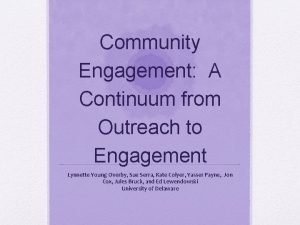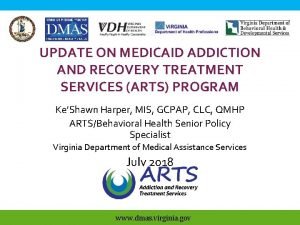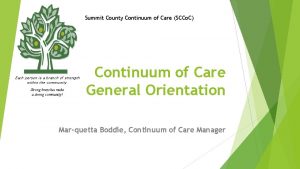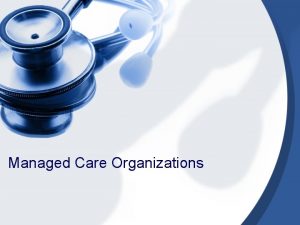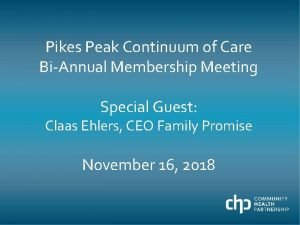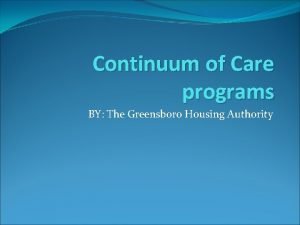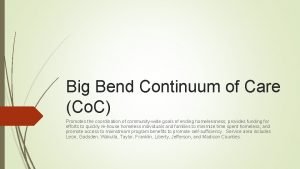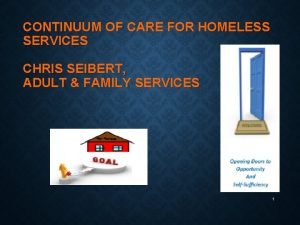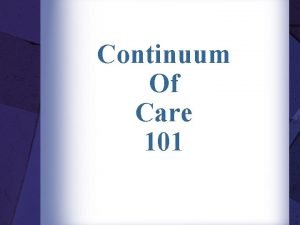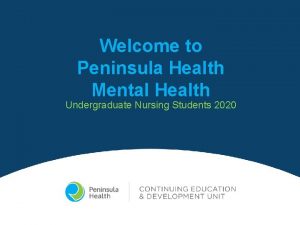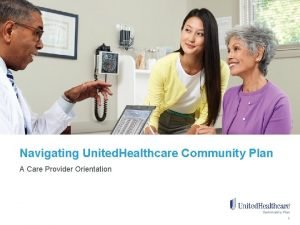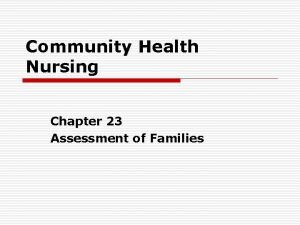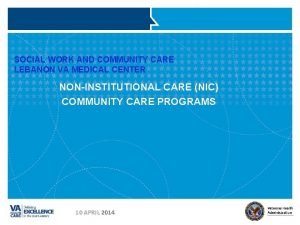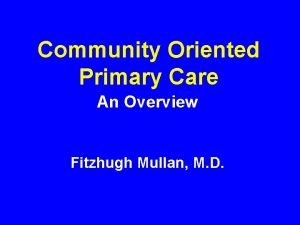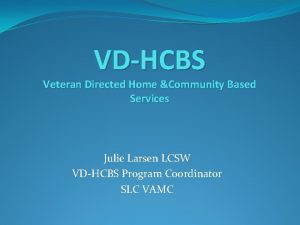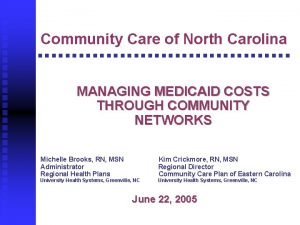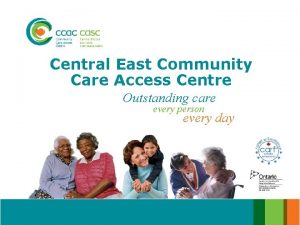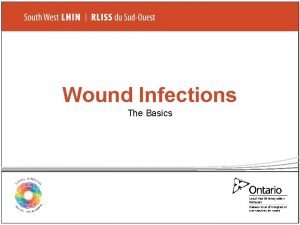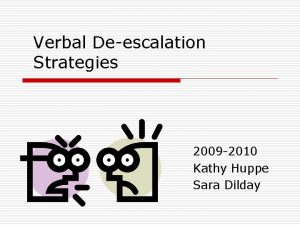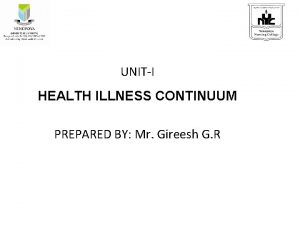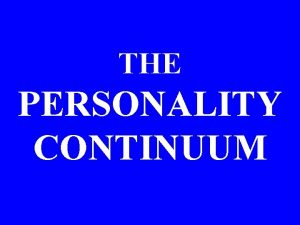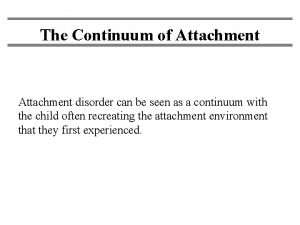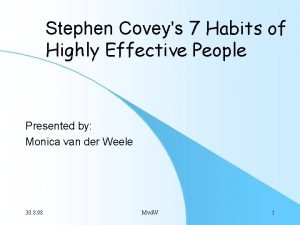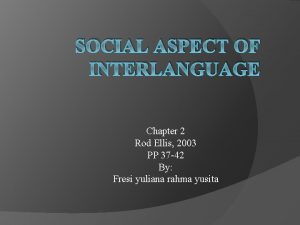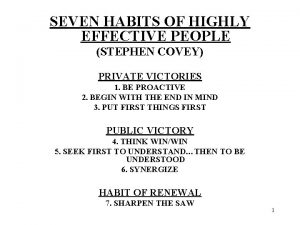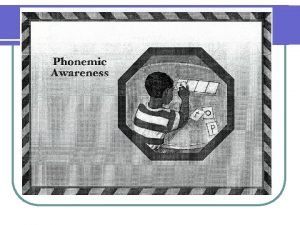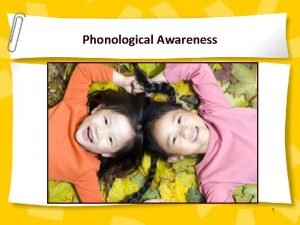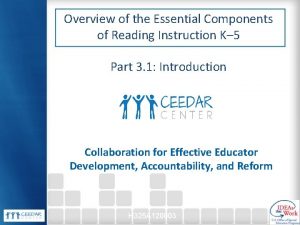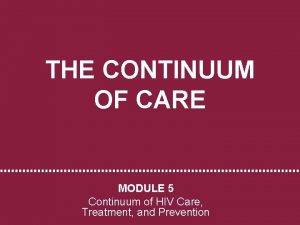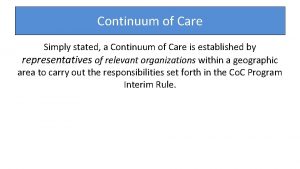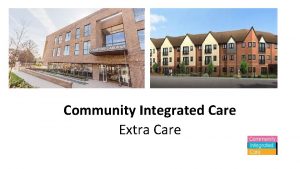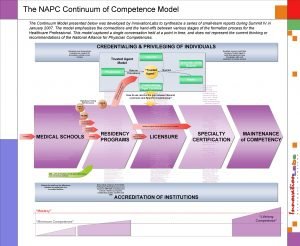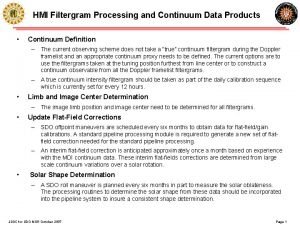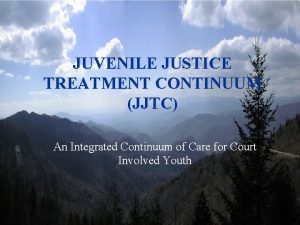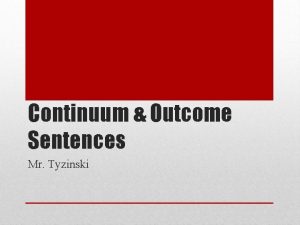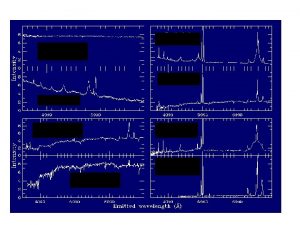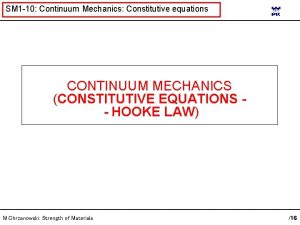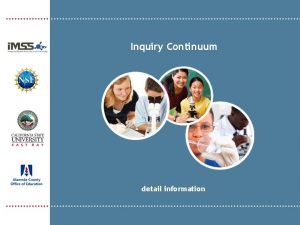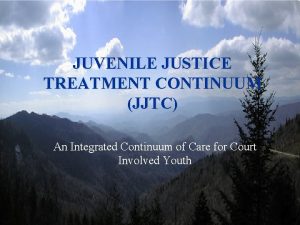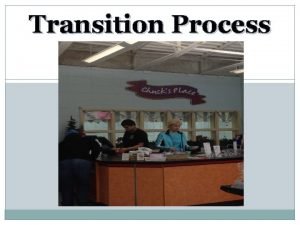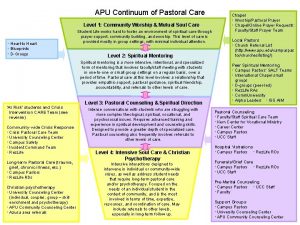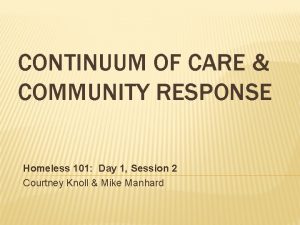Continuum of Care with a Community Transition Lucas




![Pretrial Booking • Complete pretrial risk assessment (Public Safety Assessment [PSA]) on everyone booked Pretrial Booking • Complete pretrial risk assessment (Public Safety Assessment [PSA]) on everyone booked](https://slidetodoc.com/presentation_image/44a83e1358848c70bbd67d39d6e4d461/image-5.jpg)








































- Slides: 45

Continuum of Care with a Community Transition Lucas County

Your Presenters • Michelle Butts, Lucas County Pretrial. Presentence Department • Stan Cechvala, Correctional Treatment Facility • Liz Conley, Correctional Treatment Facility • Amanda Wilson, Lucas County Adult Probation Department • Joy Norwood, Lucas County Adult Probation Department

Lucas County Court of Common Pleas Pretrial-Presentence Department Michelle Butts

What do we do? • Process clients from arrest to sentencing, and post-conviction relief • 3 components of department: ØPretrial Booking o 24/7, 365 days per year; located at county jail ØPretrial Bond Supervision o Includes Diversion screening and supervision, postconviction relief reports ØPresentence Investigation & ORAS
![Pretrial Booking Complete pretrial risk assessment Public Safety Assessment PSA on everyone booked Pretrial Booking • Complete pretrial risk assessment (Public Safety Assessment [PSA]) on everyone booked](https://slidetodoc.com/presentation_image/44a83e1358848c70bbd67d39d6e4d461/image-5.jpg)
Pretrial Booking • Complete pretrial risk assessment (Public Safety Assessment [PSA]) on everyone booked • PSA measures likelihood client will fail to appear, commit new crime and commit new violent crime • No interview needed, but we conduct interview on accused felons ØAsk brief questions about substance abuse and mental health problems • Make bond recommendation

GAIN—Short Screener • Completed in conjunction with PSA by TASC staff • Administered in five minutes • Identifies individuals who may have one or more behavioral health disorders • Gives recommendation (i. e. ; full assessment) • Still working out how judges will use this information

Treatment Alternatives to Safe Communities (TASC) • Provide referral and linkage to clients being released from jail, as identified by GAIN-SS • Connect clients with Medicaid liaison • Informs current MH/AOD provider of consumer arrest and relink consumer

Pretrial Bond Supervision • Track any services recommended or established as a result of GAIN-SS • Make referrals for assessments based upon client’s self-report of MH/AOD problems or positive drug screens

CAUTION • Pretrial clients have certain legal and constitutional rights • Need to balance individual rights with ØNeed to protect public ØAssure court appearance • Pretrial bond conditions should, therefore, not be excessive!

Ohio Risk Assessment System (ORAS) • Completed on all clients at time of referral for presentence investigation (PSI) Ø Predicts likelihood of recidivism and identifies clients’ highest Need areas • Primarily use the Community Supervision Tool (CST) Ø 7 domains 1. Criminal History 2. Education, Employment and Financial Situation 3. Family and Social Support 4. Neighborhood Problems 5. Substance Use 6. Peer Associations 7. Criminal Attitudes and Behavioral Patterns

PSI & ORAS • ORAS officer suggests conditions recommendation and programming to address client’s needs PSI • ORAS results and suggestions recommendation to Judge incorporated into PSI recommendation to Judges Judicial • PSI officer attempts to verify sentencing past/present MH/AOD treatment • ORAS vital to other parts of the judicial process………. .

Treatment Stan Cechvala Correctional Treatment Facility Toledo, Ohio

Ways of Entering a Community Based Correctional Facility • Community Sanction from Common Pleas Court • Judicial Releases • Adult Parole Authority • Outside Counties • Intervention in Lieu/Community Control Violations • Direct Sentencing after completing ODRC.

Upon Arrival • • ORAS (Ohio Risk Assessment System) AOD Assessment (alcohol & drug) ACE (Trauma Assessment) PREA (Prison Rape Elimination Act)

During Treatment • Assigned a Case Manager • Treatment Plans every 30 days based upon domains from ORAS. Criminal History Education/Empl Substance Abuse Family/Social oyment/Fin Neighborhood Criminal Peers Criminal Mental/Medical Attitudes/Beliefs • High Risk Offenders serve roughly 120 days. • Moderate Risk Offenders serve roughly 90 days.

Types of Treatment - TFAC SAFE University of Cincinnati Cognitive Intervention for Substance Abuse Relationship Building Epictetus Commitment to Change Anger Management Pro-Social Behaviors Criminal Thinking Recreation Meditation Sober Living Education (GED program) Healthy Living Grief and Loss TREM Health and Wellness (Female Only) Moving On (Female Only) Parenting (Female Only) YWCA (Domestic Violence classes for Female Only)

Challenges during Treatment • • • Resistance to Authority Rapport, Rapport Stages of Change Internal Sanctions Communication is KEY

Releasing • Housing challenges • Warrants, Holders, Work Release, Electronic Monitoring, No Contact Orders, Temporary Protection Orders, Sex Offenders, Arson Offenders, Transitional Sober Living Environments, Review Hearings, Notification of Judges, Notification of Probation, Vivitrol Series, Mental Health. • Aftercare preparation • Passing along information (Treatment Plans, Discharge Summaries)

C. T. F. Aftercare Presented by: Liz Conley

Recovery is a Lifelong Commitment • Once discharged, readjusting to everyday life can be difficult and stressful. • Since, it is common to relapse back into old patterns within the first few months posttreatment, a continuing aftercare plan is crucial to the overall drug recovery process. • Communication and collaboration with probation, parole, mental health and judges is important!

Combination of Treatment and Recovery: Emphasis on Recovery Treatment – demonstrating skills learned while in aftercare on a daily basis. Recovery – linking client with sober support in the community for continued recovery following completion of aftercare sentence. The benefits of 12 -step recovery programs include: • • The opportunity to connect with other recovering addicts at free meetings and sober events Access to motivational speakers and literature to help them to reach their recovery goals Practical guidelines and strategies for coping with the daily challenges of addiction The guidance of a sponsor who can lead client through the 12 steps, providing strength and motivation. “It’s time to start living this!”

CTF Aftercare Requirements Aftercare includes: CTF aftercare requirements: from 2 -4 MONTHS • MONDAYS, WEDNESDAYS AND FRIDAYS • Morning Group: Time: 8: 45 am- 9: 45 am • Afternoon Group: Time: 1: 30 pm- 2: 30 pm • TUESDAY: Gender Specific groups • Women’s Group: Time: 8: 45 -9: 45 am • Men’s Group: Time: 10: 15 -11: 15 am • THURSDAY: (Employment Readiness Group) Time: 9: 00 am- 10: 30 am Attendance is Optional Random Weekend Urine Drop Schedule: Saturday/Sunday *Weekly urine screens (mandatory) *Curfew calls nightly; 10 p. m. -Sun-Thurs; 11 p. m. -Fri-Sat. random call backs nightly *Required to attend 6 -8 12 step recovery meetings weekly (AA, CA, HA, NA). *Phase progression is based on performance *Allowed to work with stipulations

Components of Aftercare • • • Treatment Planning Family Programming Gender Specific Groups Integrated Recovery Services 12 step recovery meetings Community resources Employment Collaboration with other counties Transitional housing (referrals, monitoring)

Treatment Planning Treatment planning in Aftercare is interactive based on current issues or needs reported by the client. • Completed within first week of aftercare • Focus on the strengths and weaknesses as reported by client. • Reviewed with case manager regularly to evaluate progress in aftercare.

Family Programming Help For the Family: Bi-weekly; conducted prior to release from residential programming. • Aftercare programs help provide support and instruction for the clients’ family members. • Many times there is still a great deal of tension between the individual and the family caused by events that occurred during the period of drug use and/or criminal activity.

Gender-Specific Groups A Place to Talk: Weekly 1 -hour sessions Another valuable element of aftercare programs is the channel of communication it opens up for the recovering addict. The individual goes through a lot when returning home after rehab: can become easily and quickly overwhelmed. i. e. relationships with significant other, kids, work, appointments, transportation, housing, using thoughts, etc.

Integrated Recovery Services Throughout the recovery process, treatment for mental health disorders should be integrated with treatment for addiction to ensure the best outcome. (referrals made by both the p. o. and case mgr. ) In aftercare, mental health professionals and addiction counselors should continue to work together as members of your treatment team.

Community Resources and Partner Agencies

Re-Entry Coalition: 1 st Wednesday The Going Home to Stay meeting was developed cooperatively by the Reentry Coalition of Northwest Ohio and the Ohio Adult Parole Authority. It is designed for front loading services to ex-offenders and their families. The meeting is open to ANYONE on or off of supervision.

Re-Entry Coalition The format for the event is simple: Organizations that attend the meetings are given 3 -5 minutes to present an overview of their organization and the services that they provide. When the presentations are concluded time is allotted for individual consultation with participants. During this time the representative can: • Arrange appointments • Give more detailed information about the organization • Address specific issues

Partner Agencies • • • • Government Agencies Community agencies Economic Opportunities AIDS/ARC Veteran Affairs Job and Family Services Child Support University of Toledo Ohio State Extension YMCA The Source Social Security ABRI Weed N Seed Citizen Circle Faith Communities • • • • Rehabilitation Services Commission Treatment Alternative to Street Crime Haven Homes Care. Net Ohio Benefit Bank ABLE Legal Aid of Western Ohio Bureau of Motor Vehicles Fair Housing Neighborhood Properties Cherry Street Mission Parents Helping Parents Ohio Benefit Bank (OBB) (CTF CLOTHING CLOSET)

LUCAS COUNTY ADULT PROBATION DEPARTMENT Amanda Wilson

18 months Continuum of Care First 90 – 120 days Intensive in-patient Treatment Orientation Group Initial Meeting Create Case Plan

CTF / Aftercare • 30 – 90 days – Office Visits – determined by the ORAS score. – Case plan – Interventions – as requested. – If applicable - Life Skills Groups. CALM • C = Cognition: Is this up to me or not? • A = Act: What is the best course of action to take? • L = Let It Go: Find a way to accept what is happening without causing fear or stress. • M = Move On: Do not spend time dwelling on things beyond your control.

LCAPD Transition • 6 – 12 months – Case plan reviewed – Goals modified – Community referrals as needed. – Professional life support.

45 January, 2014 – February, 2016 Continuum of Care Success Rate 40 35 30 25 20 15 10 5 0 Compliant - Still on Supervision Noncompliant - Still on Supervision Terminated Early (Successful) Terminated Unsuccessful

Lucas County Adult Probation ~Lucas Colusa County Adult Probation Lucas County Adult Probation ~Lucas County Adult Probatio ~ ~ Joy Norwoodunty Adult Probation Joy Norwood ~ Joy Norwood

Risk-Need-Responsivity Model (RNR)

Three Core Principles: 1 2 3 Risk Principle Need Principle Responsivity Principle

1 Risk Principle Match the level of service to the offender’s risk to reoffend.

2 Need Principle Assess criminogenic needs and target them in treatment.

3 Responsivity Principle Maximize the offender’s ability to learn by providing cognitive behavioral treatment and tailoring.

Therefore. . . To Increase Success We Have To Start To. . . • Become a “Change Agent” • Traditional Supervision – Formulated as a Case Management System. • Cognitive-Behavioral Interventions • Motivational Interviewing • Trauma Informed Awareness • Problem-solving – identify obstacles. • Client Directed Services

Future Planning: What Happens Now Reassessment of Needs – What Occurs After Reduction • Positive Rapport Building • Create a New Baseline and a New Focus • Case Planning • Utilize Assessment Tools • Determine Future Goals

Result. . . Success and Productive Members of Society. Probation Department
 Primary secondary and tertiary care
Primary secondary and tertiary care Community engagement continuum
Community engagement continuum Asam continuum of care
Asam continuum of care Summit county continuum of care
Summit county continuum of care Care continuum prior authorization
Care continuum prior authorization Pikes peak continuum of care
Pikes peak continuum of care Continuum care greensboro nc
Continuum care greensboro nc Continuum
Continuum Continuum of care
Continuum of care Continuum of care
Continuum of care Continuum of care reform
Continuum of care reform Community action cycle for community mobilization
Community action cycle for community mobilization Papu frankston
Papu frankston United healthcare community plan
United healthcare community plan Veterans directed home and community based care
Veterans directed home and community based care Family care plan in community health nursing
Family care plan in community health nursing Community medical care lebanon va
Community medical care lebanon va Community oriented primary care definition
Community oriented primary care definition Vd hcbs
Vd hcbs Community care plan of eastern carolina
Community care plan of eastern carolina Central east community care access centre
Central east community care access centre Standard 3 care certificate
Standard 3 care certificate Ce atrage magnetul
Ce atrage magnetul Palliative care vs hospice care
Palliative care vs hospice care Animale care fac oua
Animale care fac oua Care sunt simturile prin care sunt evocate
Care sunt simturile prin care sunt evocate Standard 13 health and safety
Standard 13 health and safety Hip fracture clinical care standard
Hip fracture clinical care standard Health and social care values unit 2
Health and social care values unit 2 Numeracy progressions version 3
Numeracy progressions version 3 Wound infection continuum
Wound infection continuum Victorian curriculum eal
Victorian curriculum eal What are the 5 stages of the verbal escalation continuum
What are the 5 stages of the verbal escalation continuum Health-illness continuum
Health-illness continuum Interpersonal continuum
Interpersonal continuum Turkey location on the economic continuum
Turkey location on the economic continuum Reactive attachment disorder
Reactive attachment disorder Maturity continuum 7 habits
Maturity continuum 7 habits Habit 6 synergize meaning
Habit 6 synergize meaning Interlanguage and stylistic continuum
Interlanguage and stylistic continuum Upward spiral 7 habits
Upward spiral 7 habits What is risk continuum
What is risk continuum Modello del continuum
Modello del continuum Phonological continuum
Phonological continuum Phonemic awareness continuum
Phonemic awareness continuum Phonological continuum
Phonological continuum

